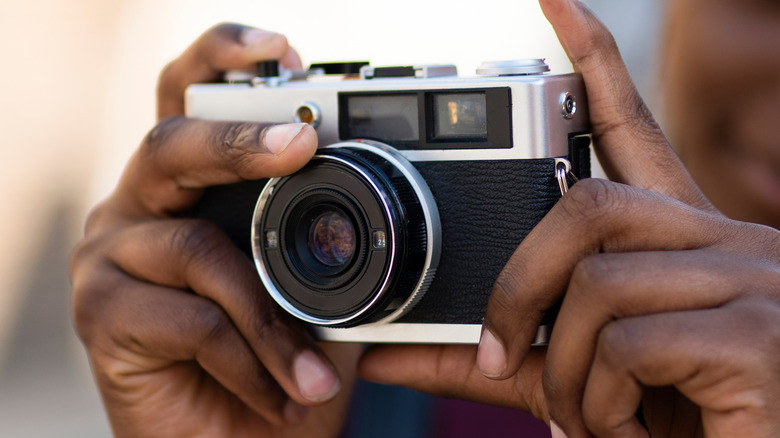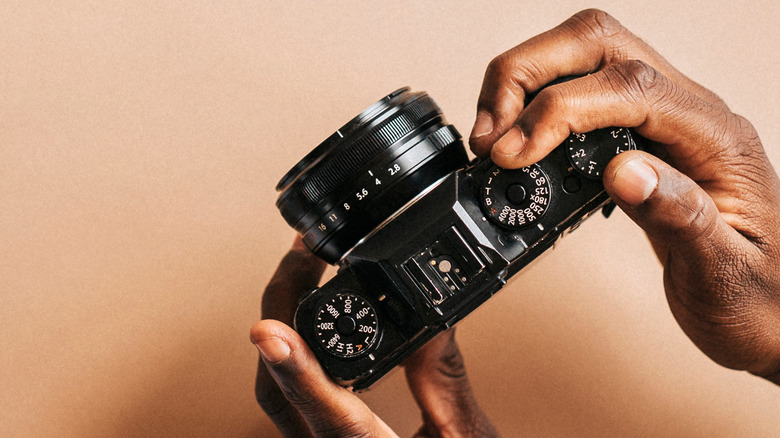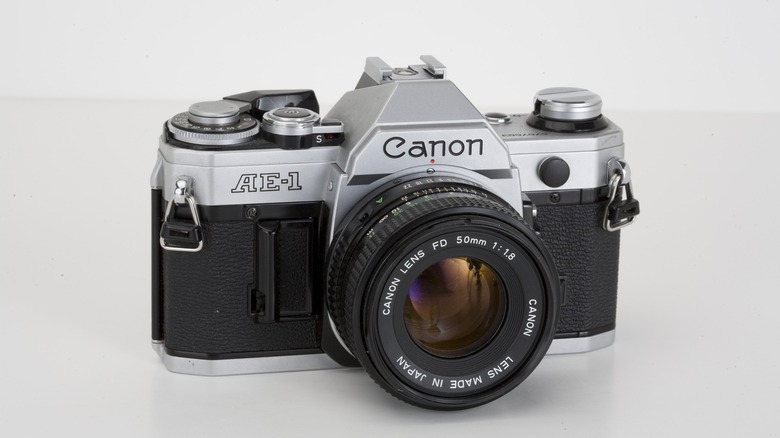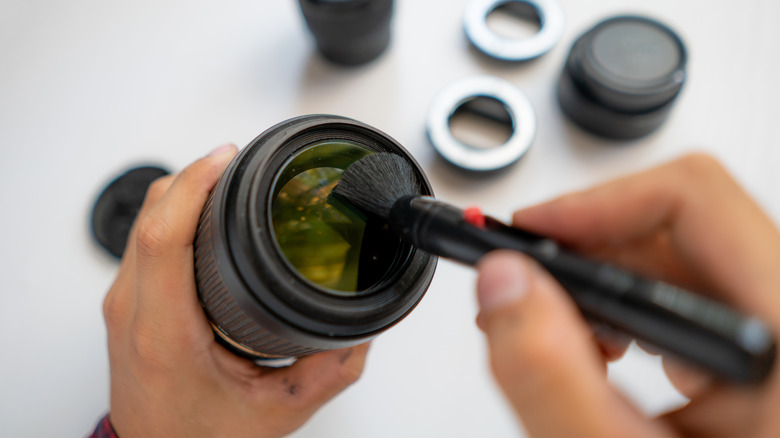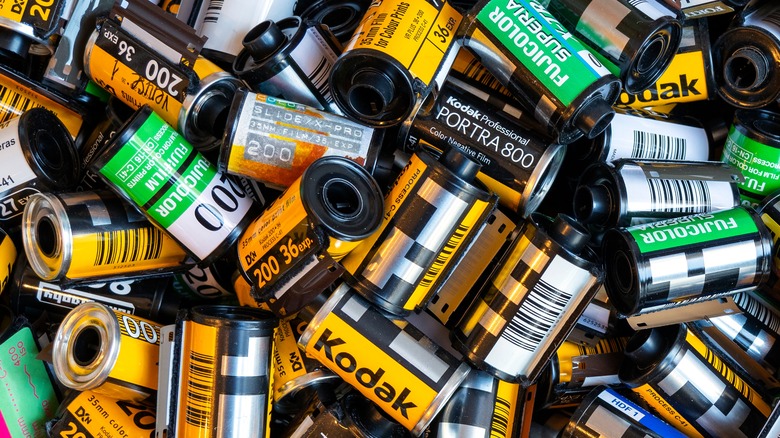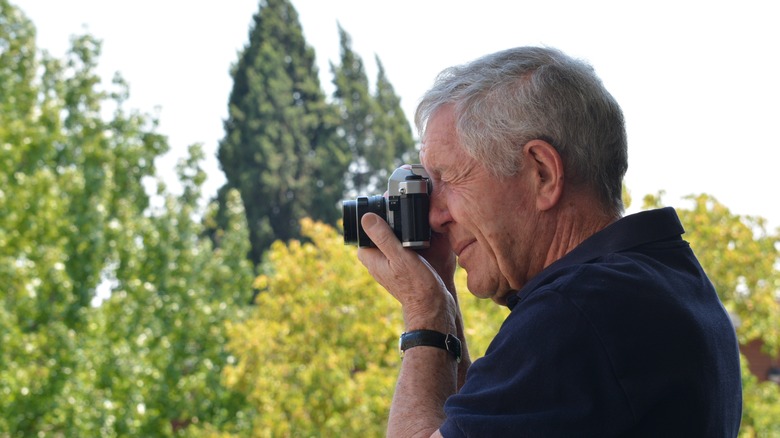Everything You Should Know Before Buying A 35mm Camera
We may receive a commission on purchases made from links.
Film photography has seen a spike in popularity over the past few years, with many existing digital photographers adding or returning SLRs to their arsenals. Even some beginner photographers are deciding to start with film before making the jump to digital — possibly due to the 30-year nostalgia cycle coupled with internet hype.
Most seem to get into film seeking the colors and character that only images shot on film have (though some brands like Fuji do an excellent job of replicating it in their digital cameras). Meanwhile, others are attracted by the process itself — the mechanical nature of the cameras and lenses, the limitation of having one speed and few shots, the inability to review your images until they have been developed, and in some cases, developing and scanning your own images. Whatever your reasons, it's undeniable that film cameras offer a very different experience from that of their digital successors.
Thankfully, used SLRs are easy to find. Film manufacturers such as Kodak have been ramping up production to meet the Millenial and Gen Z demand, and there are more online resources on film photography with each passing day. Now might be a good time to go out, pick up an SLR and some rolls of film, and start shooting. Before you do, though, here are a few tips you might need to know to make your introduction to film photography as smooth as possible.
Camera bodies
You can typically find three types of 35mm cameras: Single Lens Reflex (SLR), Rangefinder, and Point-and-shoot.
Single Lens Reflex cameras operate on a single lens. A mirror and prism reflect the image from the lens to the viewfinder, so what you see will be projected onto the film when exposed.
With a rangefinder camera, there are two separate lenses used for focusing — what you see isn't exactly what your primary lens sees, but it is very close.
Point-and-shoot cameras generally have basic autofocus or a fixed focus and focal length. You will have to zoom and focus with your feet, i.e., by physically moving closer or away from your subject.
Point-and-shoot cameras are an excellent way to take quick photos and familiarize yourself with film without a massive investment in gear or training. Meanwhile, an SLR will likely be your best bet if you are looking for more learning, involvement, and creative control in the process of making photos. The same applies to rangefinders, though they can be harder to find and more expensive. If money is no object, you can still buy brand-new rangefinders, but we suggest you buy something affordable from the used market for your first foray into 35mm photography.
Lenses
If you buy an SLR or rangefinder body, you will also have to buy at least one lens (also called "glass"), and choosing the right one(s) is possibly the most important step. As any photographer will tell you, you will want to invest in good glass over anything else. This is even more crucial in film photography because a manual camera and film reel will not apply lens corrections or any other edits. What you shoot is what you get, so give yourself the best chance of getting something good.
Since most 35mm cameras and lenses will be from the '90s or earlier, keep in mind that lens technology was not what it is today. If you need versatility, a used zoom lens should suffice. However, we suggest investing in at least one prime (fixed focal length) lens as they can provide significantly better image quality, even if they are much older than the zoom lenses you find.
You will want to keep your lens and body options in mind when shopping for both, as each manufacturer has its own proprietary lens mount. Modern lenses often have features that won't work with an older camera, such as electronic aperture control, so you will want to make sure that your camera body is compatible with whichever lens you buy.
Inspecting and maintaining your gear
Since most or all of the gear you will potentially buy will be used, ensure they are in the best possible condition.
If you can, look for equipment inspected and certified as being in working order. If it has not been tested, try firing the shutter, testing the light meter (if the body has one), and the film advance lever/button, to make sure they are functional. Look through the viewfinder and lens(es) to confirm they are clean and free of dust or fungus. Further tests, such as looking for light leaks in the body and shutter, can't be done until you have a roll of film in the camera. Ideally, the body and shutter should keep your film in total darkness until you actuate the shutter and expose the film to light.
You may also want to look at investing in a dry box and basic cleaning kit to maintain your camera and lenses. Other essential maintenance will include checking the batteries that power the light meter or other electronics. If possible, avoid keeping batteries in the camera when it isn't in use. Keep space in your fridge or freezer to store unused film, too.
Understand film types
35mm film generally comes in two types: color negative and black & white negative. The color film will offer much more variety in color profiles — from Kodak's relatively low-cost and muted Colorplus film to the more expensive but vibrant Portra film beloved by photographers for how it renders skin tones and golden hour light. Different film stocks can vary significantly in quality and color reproduction within a brand, let alone between them. While it can be tweaked with filters, B&W film generally offers less variety in how it renders images. But it's similar to color film in that the higher the ISO rating, the more sensitive the filmstock will be to light, thus affecting the grain in your image (analogous to noise in digital ones).
There's also slide film but look at getting into that once you have much more experience. The cost and difficulty of using it aren't worth it when you are starting out.
One more thing to note: In the long run, film photography can become quite expensive. Especially when compared to digital photography on a per-shot basis, since a roll of 35mm film will have a maximum of 36 frames on it, unlike a memory card which can hold thousands of photos, be erased and refilled, and last years. Since film prices have been rising over the past year or so, it's a good idea to make sure you factor the cost of film and development into your overall budget.
Be ready to plan and be patient
Film photography is an exercise in planning and patience. Old film cameras don't have 99.9% of the features available in modern DSLRs and mirrorless cameras. At best, you will have a built-in light meter and maybe autofocus if the camera is "new" enough. This means that shutter speed and lens aperture must be set manually, especially if your camera doesn't have a working light meter.
Getting the hang of fully manual film photography and learning the limits of your film can take some time. Especially since you can't see how well a shot came out until after it has been developed, which can take days. Therefore, go into this purchase and your subsequent photography knowing you may have to go slow. Try to record details like aperture, shutter speed, and light conditions of each shot separately to see how they affect the images you get with different settings, film, body, and lens you use. You will also have to think about each shot since you only get a maximum of 36.
That being said, this is what you are signing up for when you buy a 35mm camera. If you want to shoot 120 frames per second, you want a Nikon Z9, not a 35mm camera. Go slow, be thoughtful, and enjoy your new(ish) 35mm shooting experience.
